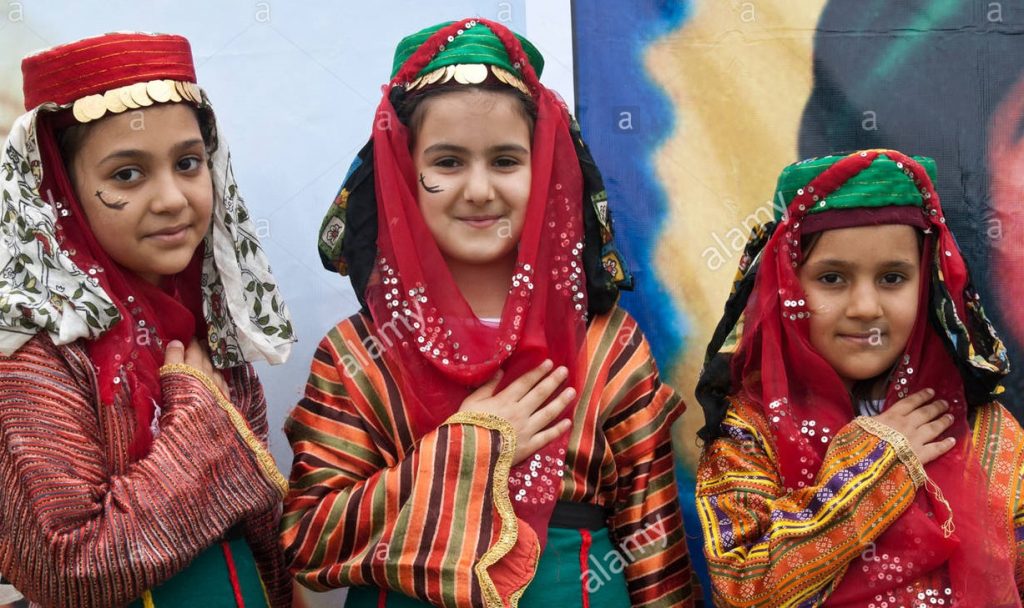
History and Origins of Alawits Branch of Shiism

The origins of Alawits branch of Shiism or the Nusayris may be traced to a certain Abu Shuʿayb Muhammad b. Nusayr al-Namiri (or al-Numayri), who hailed from the ghulat circles on the fringes of Imami Shiʿism
Ibn Nusayr was a supporter of the tenth and eleventh Twelver Shiʿi Imams and later proclaimed the divinity of the imams and also claimed the status of prophethood for himself. He evidently held that Imam al-Hadi had personally designated him as a prophet. Imami sources deny the claims of this first figure of Alawits branch of Shiism though.
It seems that Ibn Nusayr had his own original circle of disciples and supporters in Samarra
Matters are particularly complicated as the members of the radical Nusayri sect observed taqiyya rather strictly. The Nusayri sources that have come to light in modern times have preserved only the names of Ibn Nusayr’s successors to the leadership of the group, starting with Muhammad b. Jundab, appointed by Ibn Nusayr himself. Muhammad was, in turn, succeeded by ʿAbd Allah al-Jannan al-Junbulani.
One Abu ʿAbd Allah al-Husayn b. Hamdan al-Khasibi, a disciple of al-Junbulani and who initially led the sect in the Shiʿi suburb of al-Karkh to the south of Baghdad, was the person responsible for propagating the doctrines of Alawits branch of Shiism in northern Syria, which was to become the permanent stronghold of their community
While dissimulating as an Imami Shiʿi, al-Khasibi became a major transmitter of Nusayri teachings, including mystical and allegorical interpretations (taʾwil) of Qurʾanic passages.
Indeed, he played a key role in the development of early Nusayri doctrines and their propagation in both Iraq and northern Syria. From amongst his numerous disciples, al-Khasibi chose Muham- mad b. ʿAli al-Jilli as his successor to lead the Nusayris of northern Syria.
The subsequent medieval history of the Nusayris is rather obscure. Henceforth, the Nusayris lacked charismatic central leaders and were mainly led in various scattered groups by their local shaykhs.
The Nusayri community in Syria enjoyed the support of a number of local tribal families, such as the Banu Muhriz
By the second half of the 19th century, the Ottomans controlled the Nusayri territory through a local chieftain, while the Nusayri tribal leaders were often engaged in factional fighting
In the aftermath of the disintegration of the Ottoman empire and the imposition in 1920 of the French mandate over Syria, the French established the ʿAutonomous Territory of the Alawites’, consisting of the province of Ladhiqiyya, the northern part of the province of Tripoli and part of the province of Hama, while ceding Cilicia, another Nusayri (now called ʿAlawi/ʿAlawite) region, to Turkey. Two years later, in 1922, the Autonomous Territory of the Alawites was proclaimed the ‘State of the Alawites’ (Dawlat al-ʿAlawiyyin), Additionally, many ʿAlawis had joined the country’s ruling Baʿth Socialist Party and now occupied key positions in the army and the government administration.
Taken from: A History of Shi’i Islam
By: Farhad Daftary
The Doctrines of Alawites - Shia Tent
July 26, 2021 at 12:36 pm[…] Nusayris-ʿAlawis, whose history and origins were discussed in the previous post, have remained a secretive, esoteric community, observing taqiyya and closely guarding the religious […]
Events Celebrated by Alawites - Shia Tent
August 1, 2021 at 7:48 am[…] Shias and different branches of this sect share many rituals. There are many events celebrated by Alawites and other religions or sects of Shiism but they have different interpretations and they celebrate […]
Ashura Festival among Alevis - Shia Tent
August 7, 2021 at 9:41 am[…] The Alevis are a sect of Islam whose followers abide by the views of the mystic Haji Bektash Vali. Based primarily in Turkey, they are close to the Twelver Usuli Shias as they follow the teaching of the Twelve Imams, but do not ahdhere by the fatwas of a Marja. However, the rites and rituals are very similar to the ones of Twelver Shia, vis-à-vis respect for the Ahl-e-Bayt, commemorating Karbala and Azadari in the month of Muharram […]
Alevi Houses of Worship; Cemevi - Shia Tent
August 24, 2021 at 10:39 am[…] to this branch of Shiism, the cemevis are Alevi houses of worship that have significant importance in Alevi Islam. A cemevi […]